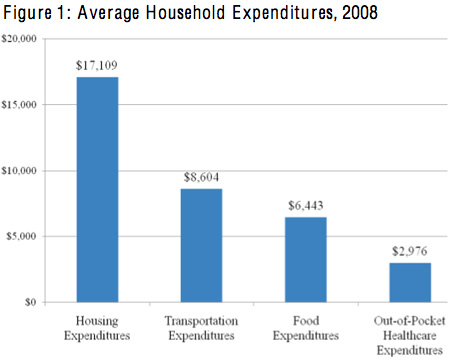
When President Obama announced his push for a long-term transportation bill on Monday, he introduced a report by his Council of Economic Advisors and the Treasury Department analyzing the economic impact of infrastructure investment [PDF]. At face value, the numbers in the president's plan might not look so impressive. It calls for rebuilding 150,000 miles of roads, laying and maintaining 4,000 miles of railways, and the restoration of 150 miles of airport runways.
If you're hoping for an all-out push for sustainable transportation and livable streets, you may be wondering whether this signifies much of a change to the highway-centric status quo. Look at the underlying message, and it does.
The headline numbers sit on top of a broad strategy that groups including Transportation for America, the Environmental Defense Fund, the Transportation Equity Network, and U.S. PIRG have all applauded. There are still few specifics in the administration's plan, but here's a quick cheat sheet to the elements of the report that transportation reformers find so encouraging.
It emphasizes the need to provide American families with a range of transportation options, not just driving.
The report calls attention to the heavy burden that high transportation costs place on the middle class. “The average American family spends more than $8,600 a year on transportation, one-third more than they spend on food,” it states, pointing out that the wealthiest 10 percent spend only 9 percent of their income on transportation, while everyone else shells out 16 percent of our income to move from point A to point B.
The report links high transportation costs to car dependence and makes the case for increasing access to transit and other transportation options, asserting that "[t]his burden is due in large part to the lack of alternatives to expensive and often congested automobile travel. Multi-modal transportation investments are critical to get American families moving again without wasting their time and their money sitting in traffic.”
It makes the case for a “fix-it first” approach to highways -- which should help put the brakes on sprawl.
The administration notes that the decrepit state of the nation's roadways is exerting a toll on Americans' household budgets through "car maintenance due to potholes and poor road conditions." And it refers to the work of economist Edward Gramlich, who argued that "the greatest return on investment can be garnered from spending on maintenance of existing highways." The nation's highway spending should be targeted at keeping our existing roads in a state of good repair, not the over-expansion of the interstate system.
It advances the idea that America needs a new system of transportation investment that fund projects based on merit, not politics or formulas.
The report continues to make the administration's case for a national infrastructure bank that would provide a mechanism for investing strategically in infrastructure. Instead of allocating transportation funds with a haphazard, often politically-driven system that ends up favoring highways-to-nowhere, the report notes that "a well designed infrastructure" bank would leverage private capital to "fill the gaps in our infrastructure funding system, which currently disadvantage investments in multi-modal" projects and projects that cross state lines.
It advocates for investments in “healthy, safe and walkable neighborhoods, whether rural, urban or suburban.”
The report cites the U.S. DOT’s six principles of livability and mentions the success of transit-oriented development as a path toward improving neighborhood economies.
The time is now.
The economic downturn represents an opportunity for smart spending right now, according to the report. With construction costs down, low bids have allowed stimulus funds to stretch 10 to 20 percent more than predicted. So if anyone was wondering: this is the perfect time to start building.
The administration is framing its infrastructure push as way to keep America globally competitive, echoing a theme which reform-minded lawmakers like Oregon Representative Earl Blumenauer have been sounding for years: that the U.S. is lagging behind other nations in infrastructure investment, as the two percent of GDP our country spends annually is dwarfed by Europe’s five percent and China’s nine percent.
The release of the report hasn’t changed the timing of the six-year transportation reauthorization, which is expected to move soon after the next Congress convenes in 2011. But administration officials have made clear that they will push for the "$50 billion down payment" when Congress comes back after the elections for its lame duck session. Lawmakers will need to address the December 31 expiration of the current extension of SAFETEA-LU, but they will likely just extend it again.
The question then will simply be, how long of an extension will they authorize? A short extension will signal a willingness to take up a real reauthorization soon.





